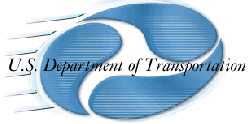Increases Compensation For Bumped Passengers; Proposes
LaGuardia Caps
 US Transportation Secretary
Mary Peters announced Wednesday a series of new measures to
strengthen airline passenger protections, improve consumer choice
and reduce congestion -- including doubling the limits on
compensation airlines must pay flyers bumped from oversold flights,
and establishing operational improvements to cut delays this
summer.
US Transportation Secretary
Mary Peters announced Wednesday a series of new measures to
strengthen airline passenger protections, improve consumer choice
and reduce congestion -- including doubling the limits on
compensation airlines must pay flyers bumped from oversold flights,
and establishing operational improvements to cut delays this
summer.
"We are taking steps to improve the travel experience, cut
delays and lower fares in one of America's busiest aviation
markets," Peters said.
The Department finalized changes Wednesday to Part 250, the
so-called bumping rule, which doubles the limit on compensation
airlines must pay passengers who are involuntarily bumped from
their flight. Under the new rule, which goes into effect next
month, fliers who are involuntarily bumped would receive up to $400
if they are rescheduled to reach their destination within two hours
of their original arrival time or four hours for international
flights, and up to $800 if they are not rerouted within that
timeframe.
The new rule also covers more flights, including those operated
with aircraft seating 30 people or more; the current rule covers
flights with 60 seats or more. The amount of these payments are
determined by the price of the ticket and the length of the delay,
and are in addition to the value of the passenger's ticket, which
the flyer can use for alternate transportation or have refunded if
not used.
"It's hard to compensate for a missed family occasion or
business opportunity, but this rule will ensure flyers are more
fairly reimbursed for their inconvenience," Secretary Peters
said.
Peters also announced new air traffic measures designed to help
cut delays this summer. The first involves new and greater
flexibility for aircraft to use alternative routes in the sky to
avoid severe weather. This includes a new routing alternative that
provides an "escape route" into Canadian airspace from the New York
metropolitan area, so airlines can fly around summer thunderstorms
and high winds.
In addition, the FAA will open a second westbound route for
aircraft taking off from northeastern airports. This would in
effect provide a parallel route along a heavily-traveled aviation
corridor, helping cut westbound delays from the New York area. "By
making better use of our skies, we are working to limit the impact
weather has on travelers on the ground," Secretary Peters said.
The Department also is proposing a new way to manage congestion
at New York's LaGuardia Airport. Even though this facility has been
capped since 1968, it is still consistently one of the top three
most delayed airports in the nation, she said. Under a supplemental
rulemaking announced Wednesday, the Department is proposing two
market-based options that would require a limited number of flights
operated by the airlines in a given day, known as slots, to be made
available through an auction process.

"This proposal increases choices for passengers and adds
competition, which is proven to lower fares. It also cuts delays
and funds new aviation capacity projects for the region," Peters
said.
Under the first option, all air carriers would be given up to 20
slots a day for the 10 year life of the rule. Meanwhile, over the
next five years, 8 percent of the additional slots currently used
by an airline would be made available to any carrier via an
auction. An additional two percent of the slots would be retired to
help cut the record delays at the airport. Proceeds from the
auction would be invested in new congestion reduction and capacity
improvement initiatives in the New York region.
The second option also gives airlines permanent access to up to
20 slots a day for a 10 year period. Beyond those flights, 20
percent of the slots currently used by the airlines would be made
available over the next five years to all airlines through an
auction. Under this option, the carriers would retain the net
proceeds of the auction.
 The Secretary said both
options provide financial stability to the airlines operating at
LaGuardia by providing them with a defined right to operate at the
airport for a decade, something they do not have today. These
rights are given in recognition of the significant financial
investment the airlines have made in the airport's infrastructure,
she said.
The Secretary said both
options provide financial stability to the airlines operating at
LaGuardia by providing them with a defined right to operate at the
airport for a decade, something they do not have today. These
rights are given in recognition of the significant financial
investment the airlines have made in the airport's infrastructure,
she said.
"Our plan strikes a sound balance between protecting investments
by incumbent carriers and ensuring that all airlines have the
ability to fly to New York's LaGuardia," Secretary Peters said.
"While the status quo at LaGuardia has led to stagnant service,
delays and unnecessarily high fares, open access and competition
will help give flyers more choices, fewer delays and lower
fares."
Overall, the Secretary said improving the passenger experience
is central to the Department's efforts and that she wanted to hear
directly from travelers how they are being impacted by problems in
the air travel industry. To do so, she has launched a series of
Aviation Consumer Forums to hear from consumers and help educate
air travelers about their rights and responsibilities.
The first DOT-hosted forum is scheduled for April 17, in Miami,
to be followed by public meetings in Chicago and San Francisco in
the near future.
 ANN's Daily Aero-Linx (05.02.24)
ANN's Daily Aero-Linx (05.02.24) ANN's Daily Aero-Term (05.02.24): Touchdown Zone Lighting
ANN's Daily Aero-Term (05.02.24): Touchdown Zone Lighting Aero-News: Quote of the Day (05.02.24)
Aero-News: Quote of the Day (05.02.24) ANN FAQ: Contributing To Aero-TV
ANN FAQ: Contributing To Aero-TV NTSB Final Report: Cirrus Design Corp SR20
NTSB Final Report: Cirrus Design Corp SR20





